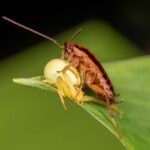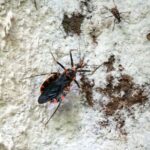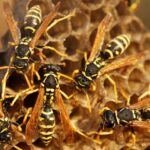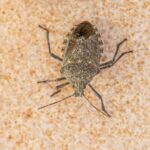Rodents, such as mice and rats, are unwelcome visitors in any home.
Beyond being a nuisance, they pose serious health risks and can cause significant property damage if left unchecked.
In this blog, we’ll explore effective rodent control solutions to help you safeguard your home and family from these persistent pests.
Understanding Rodent Behavior
Understanding what attracts rodents to your home is crucial.
Common types, such as mice and rats, seek out places that offer food, water, and shelter. They can fit through surprisingly small openings. As a result, making it essential to seal potential entry points like gaps in walls, doors, and windows.
Signs of a Rodent Infestation
The first step in effective rodent control is early detection.
Rodents, such as mice and rats, are stealthy creatures that can infiltrate homes through tiny openings, seeking warmth, shelter, and food. Identifying their presence early can significantly mitigate potential damage to property and health risks associated with their presence.
Listed below are the signs that your home is infested by rodents:
Droppings
One of the most common signs of a rodent infestation in Manchester, NH is finding droppings. These may resemble small, dark pellets and are typically found along baseboards, in cupboards, or near food sources. Fresh droppings indicate recent activity and can help determine the extent of the infestation.
Gnaw Marks
Rodents have strong teeth that continually grow, necessitating constant gnawing to keep them trimmed. Gnaw marks on food packaging, wooden structures, or electrical wiring are telltale signs of rodent activity. Look for chewed edges on food containers or woodwork, which can appear rough or shredded.
Scampering Noises
Rodents are nocturnal and typically more active at night. Hearing scratching, rustling, or scampering noises in walls, ceilings, or under floors is often an indication of their presence. These sounds may be particularly noticeable in quiet environments during the evening or early morning hours.
Nesting Materials
Rodents often build nests using materials such as shredded paper, fabric, or plant matter. Discovering nests in secluded areas like attics, basements, or unused corners of garages indicates an established infestation that requires immediate attention.
Odor
In some cases, a musky or ammonia-like odor may be present due to rodent urine or nesting materials. This odor can be particularly noticeable in enclosed spaces where rodents frequent.
Effective Preventive Measures Against Rodents
Prevention is key to effective rodent control.
To stop rodent infestations, you need to understand how these pests gain access to your home and what attracts them in the first place. By implementing proactive measures, you can significantly reduce the likelihood of rodents finding your home hospitable. Here’s how:
- Seal Entry Points: Use steel wool or caulk to fill gaps around pipes, vents, and utility lines.
- Maintain Cleanliness: Store food in sealed containers, clean up spills, and keep garbage in tightly sealed bins.
- Declutter Your Home: Eliminate hiding spots by organizing storage areas and keeping items off the floor.
- Outdoor Maintenance: Trim vegetation, stack firewood away from the house, and secure outdoor structures.
- Monitoring and Early Detection: Regularly inspect for signs of rodents like droppings, gnaw marks, or strange noises.
Effective Rodent Control Solutions
When dealing with a rodent infestation, several solutions can be effective. Mechanical traps, such as snap traps and glue boards, are commonly used and should be placed in areas where rodents are active. Follow manufacturer instructions for placement and baiting to maximize effectiveness.
Rodenticides are another option, but caution must be exercised, especially in homes with pets and children. Place baits in secure, inaccessible locations where rodents frequent but where pets and children cannot reach. Always read and follow label instructions carefully to minimize risks.
Electronic repellents emit ultrasonic sound waves that are meant to deter rodents. While they are marketed as a non-toxic alternative, their effectiveness is debated, and they should be used in conjunction with other control methods for best results.
Natural and Non-Toxic Alternatives
For those seeking non-chemical alternatives, natural repellents like peppermint oil or cotton balls soaked in vinegar can be effective deterrents. However, their effectiveness may vary, and they are best used in conjunction with other methods for pest control in Manchester, NH.
Ultrasonic devices are another option, emitting high-frequency sound waves that are unpleasant for rodents. However, their effectiveness can be limited by obstacles and room layout, so placement is crucial for optimal results.
Professional Rodent Control Services
If a rodent infestation becomes too challenging to manage or if you prefer a hands-off approach, hiring a pest control in Manchester, NH is a considered wise choice. They have the expertise, tools, and resources to effectively eliminate rodents from your home safely and efficiently.
Conclusion
Protecting your home from rodents requires a proactive approach that includes prevention, early detection, and effective control measures. By understanding rodent behavior, implementing preventive measures, and utilizing appropriate control solutions, you can safeguard your home and family from the health risks and damage associated with rodent infestations.
Implementing rodent control in Manchester, NH not only ensures a safer, healthier living environment but also provides peace of mind knowing that your home is protected from these unwanted guests.






